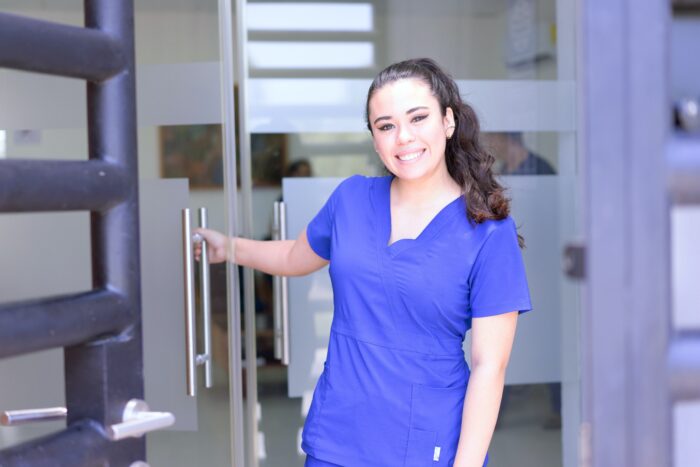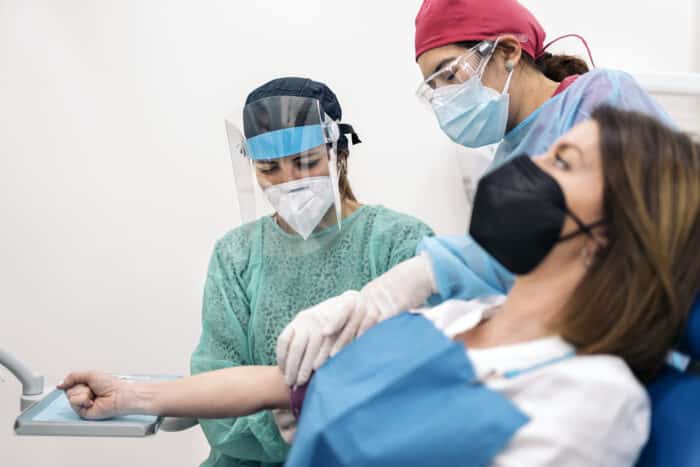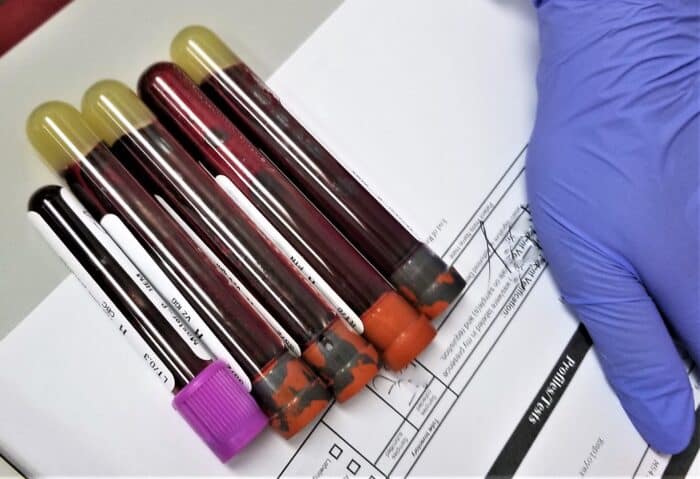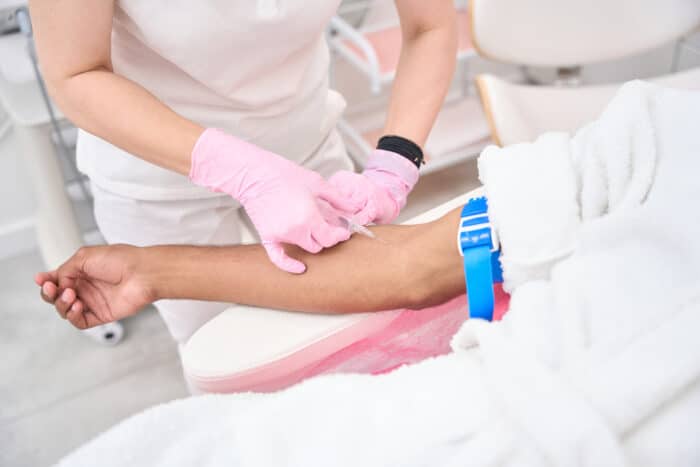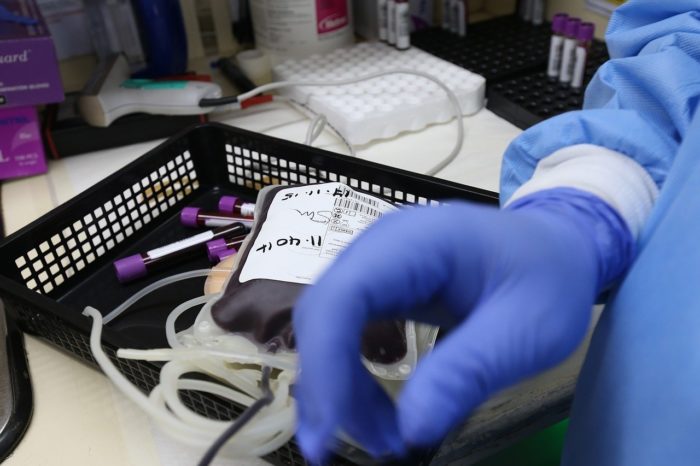Have you ever wanted to step into the rewarding world of healthcare, but don’t want to spend years on schooling and thousands of bucks for it?
If you nodded to that question, you can consider becoming a phlebotomist.
Or if you’re an aspiring phlebotomist, you might be wondering what it takes to become one.
We’re here to help you with that too.
In this ultimate phlebotomist guide, we will uncover what a phlebotomist is, what they do, what degree they need to become one, how much they earn, how to become one, and more.
So let’s not make you wait and get right into it.
What is a Phlebotomist and What Do They Do?
You might have entered a hospital or a clinic, and seen a hero in scrubs drawing and collecting blood from patients, or you might have called this hero to your home to collect your blood samples.
Phlebotomists are known to be the unsung heroes of the healthcare industry, whose main mission is to perform blood draws for diagnosis.
Phlebotomists are also usually the first point of contact in a clinic, and you might be wondering what other duties they have apart from drawing blood.
See more: What is a Phlebotomist
Let us explore.
The main tasks of a phlebotomist typically include:
- Blood Collection: Phlebotomists skillfully draw blood samples from patients using sterile techniques.
- Venipuncture: Perform safe and accurate vein punctures to collect blood for medical testing.
- Patient Interaction: Explain procedures, address patient concerns, and provide a reassuring presence during blood collection.
- Sample Labeling: Properly label collected blood samples for accurate identification.
- Equipment Maintenance: Ensure proper sterilization and maintenance of phlebotomy equipment.
- Data Entry: Enter patient and sample information into computer systems for record-keeping.
- Safety Protocols: Adhere to strict safety guidelines to prevent infection transmission.
- Collaboration: Coordinate with laboratory staff to ensure accurate testing and results.
- Pediatric Care: Adapt techniques for drawing blood from children, considering their unique needs.
- Specimen Handling: Safely transport and store blood samples to maintain integrity.
- Infection Control: Follow protocols to minimize the risk of bloodborne pathogen transmission.
- Quality Assurance: Maintain high standards in sample collection to ensure reliable results.
Phlebotomist Salary & Job Outlook
When it comes to how much phlebotomists make per year and their job outlook, both are significantly positive.
According to the Bureau of Labour Statistics (BLS), the national mean wage for phlebotomists is $37,380 per year, or $17.97 per hour.
This means that the lowest 10% of phlebotomists earned less than $28,990, while the highest 10% made more than $48,490.
The BLS also reported that the job outlook for phlebotomists for the next decade looked fairly positive, with the expected growth in job opportunities to rise by 10%, which is significantly higher than the average for other professions.
Read: Phlebotomist Salary
What Degree Do You Need to Be a Phlebotomist?
If you’re planning to step foot into the dynamic career of phlebotomy, you might be wondering what type of degree and other educational requirements you would need to become one.
That is the best part about being a phlebotomist, you don’t need a degree to become one!
All you need is your high school diploma or a GED, in addition to completing some form of phlebotomy training program.
Let’s delve deeper into that in the next section.
How to Become a Phlebotomist
Now that you know that you don’t need a degree to become a phlebotomist, you might wonder what the process of becoming one looks like.
It might seem intimidating at first, but becoming a phlebotomist is actually pretty simple, and we have listed out the process with each step explained, just for you.
Here is a step-by-step guide on how to become a phlebotomist:
Step 1: Complete Your High School Diploma or GED
Obtaining a high school diploma or an equivalent credential, such as a General Education Development (GED) certificate, stands as the minimum prerequisite.
Step 2: Enroll in a Phlebotomy Training Program
As previously mentioned, selecting the appropriate training program can pave the way for your success as a phlebotomist.
After you complete your high school diploma, the next step involves enrolling in a phlebotomy training program. It is important to ensure that the chosen program offers a thorough curriculum involving both theoretical knowledge and practical hands-on training.
Step 3: Acquire Practical Training
After the completion of your phlebotomy training, the next step typically includes gaining hands-on experience through externships or internships. There are some online training programs that offer these opportunities upon the completion of their courses.
Gaining some sort of practical experience is especially valuable for aspiring phlebotomists, as it exposes them to routine venipunctures and blood draws, two of the most important responsibilities they need to handle.
Step 4: Obtain Certification (Recommended)
Although not necessary in many states, obtaining certification as a phlebotomist is strongly advised, as employers tend to prefer certified individuals over those without certification.
Phlebotomy certifications are offered by many reputable organizations such as the American Society for Clinical Pathology (ASCP), or the National Healthcareer Association (NHA).
Each of these organizations conducts certification exams with different structures and durations, so choosing an exam that is suitable to you is important.
Step 5: Apply for Phlebotomy Positions
Now equipped with certification as a phlebotomist, you are eligible to begin the application process for phlebotomy positions within hospitals, clinics, laboratories, or other healthcare settings.
Also see: How Long Does it Take to Become a Phlebotomist
INTRODUCING: PREPPY’S ONLINE PHLEBOTOMY TRAINING COURSE
Now, you might be wondering if there is an online phlebotomy training program that can fulfill all the requirements and can help make you a successful phlebotomist even exists.
It does!
Preppy is one of the most highly recommended training programs for aspiring phlebotomists, which not only meets all the required criteria but also surpasses expectations in so many ways!
Which is why we’ve listed why we love this program.
Let’s delve into the details:
Accredited Learning:
Preppy proudly presents a Certified Phlebotomy Training Program that is in collaboration with a nationally recognized Accredited University.
University-Backed Certification:
After you complete Preppy’s accredited phlebotomy course, you will be awarded a Certificate of Completion from the previously mentioned Accredited University. This certificate serves as a valuable addition to your resume.
Exceptionally Affordable:
Preppy offers one of the most cost-effective phlebotomy programs available, so you can avoid the need to bear the burden of student loans or any financial aid.
Flexible, Self-Paced Online Classes:
A standout feature of Preppy’s program is the flexibility it provides through its fully online and self-paced classes. This accessibility allows you to instantly access your lessons from any location and at any time that suits you.
Preparation for National Certification Exams:
Beyond comprehensive training covering medical terminology, anatomy, medical billing, and more, Preppy also prepares you for the national certification exams conducted by the NHA upon completing your training.
Quick Course Completion (As Little As 2 Months):
Preppy also offers the unique advantage of completing your phlebotomy training in as little as two months. This accelerated timeline not only allows you to become certified sooner but also fastens your entry into the workforce, enabling you to start earning sooner.
Externship Opportunities:
In addition to online classes and certification exam preparation, Preppy extends externship opportunities post-course completion. This hands-on experience grants you the chance to apply your acquired knowledge and skills in a practical setting before entering the professional realm.
FREE Laptop:
Enrolling in Preppy’s program comes with the added perk of receiving a free laptop, which remains yours even after completing the course.
Round-the-Clock Support:
Preppy takes student support seriously, offering a dedicated Student Coordinator and 24/7 assistance to address your queries or concerns—whether it’s the weekend or the wee hours of the morning.
Read: Day in the Life of a Phlebotomist
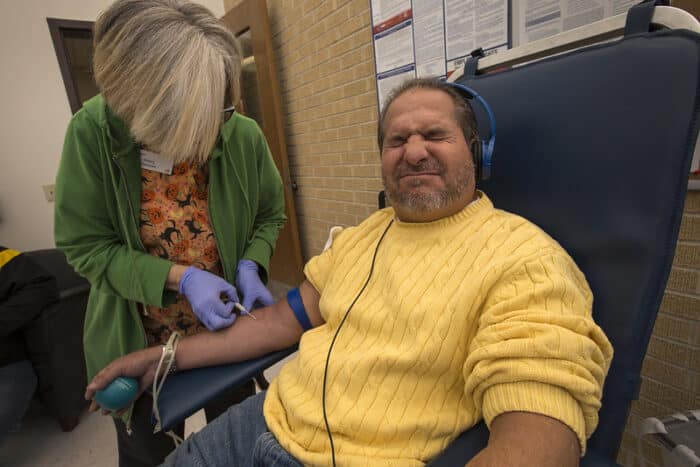
Do You Want To Become a Phlebotomist? Check Out Free Phlebotomist Masterclass!
In our masterclass you learn:
- How to be a Phlebotomist faster…in just 2 months!
- Avoid student debt & driving to classes
- #1 thing employers want from Phlebotomists
- How to stand-apart & get a university certificate for a strong resume
Related FAQs
Which exam should I take to become a phlebotomist?
To become a certified phlebotomist, you have several options for certification exams that can help validate your skills and enhance your employability.
Some of the prominent organizations offering phlebotomy certifications include the American Society for Clinical Pathology (ASCP), and National Healthcareer Association (NHA). Each organization provides a certification exam with its unique focus and requirements. Your choice of exam largely depends on your career goals, personal strengths, and the specific job opportunities you’re targeting.
See: Phlebotomist Skills
How hard is it to become a phlebotomist?
Becoming a phlebotomist generally requires a combination of education, training, and certification. The difficulty of the process can vary based on your personal aptitude for medical procedures, your dedication to learning, and the specific requirements of the program you choose.
What are the typical working hours of a phlebotomist?
Phlebotomists typically work in a variety of healthcare settings, including hospitals, clinics, laboratories, and blood donation centers. Their working hours can vary based on the specific facility and its operational schedule.
In many cases, phlebotomists work on a shift basis, which could include day, evening, and even weekend shifts to accommodate the round-the-clock nature of healthcare services.
Related Resources:
- Ultimate Phlebotomist Resume Guide – Phlebotomy Job
- Phlebotomist Job Description
- Phlebotomist Duties
- What is the Difference Between a Licensed Phlebotomist and Certified Phlebotomist?
- Where Can a Phlebotomist Work?
- What Do You Need To Be a Phlebotomist?
- Phlebotomy Externship
- Mobile Phlebotomist
- What are the Different Types of Phlebotomy Certifications?
- Phlebotomist Cover Letter
- Phlebotomist Lab Technician
- Phlebotomist Training
- Phlebotomist School
- EKG Phlebotomy Technician
- Order of Draw Phlebotomy
- Phlebotomy Internship
- 4-Week Phlebotomy Classes Online
Related Articles
-
How to Be Successful in College in 2022 – 7 Simple Tips to Succeed
-
How Do Scholarships Work? Read This First…Truth is Shocking
-
7 Best College Majors 2024: What Should I Major In?
-
How to Choose a College – 10 Things You Must Consider in 2024
-
Why Go to College? Top 13 Benefits for Adult Students in 2022
-
Top 5 Best Alternatives to Community College for 2024
